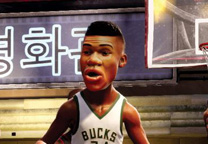Marvel Rivals Season 3: The Battle for Balance in NetEase’s Hero Shooter
Since its debut, Marvel Rivals has carved out a unique space in the
competitive hero shooter genre. Developed by NetEase, the game blends the
vibrant, character-driven chaos of team-based shooters with the rich lore and
iconic personalities of Marvel’s expansive universe. Players were quick to
embrace the title's fast-paced action, dynamic arenas,Marvel Rivals Bundles, and the interplay of
powers and abilities straight from the comic book pages. But as with any
evolving live-service game, balance has proven to be a constant battleground—and
nowhere has this been more apparent than with the rollout of Season 3.

A New Season, New Faces… and New Problems
Season 3 arrived with a bang, promising players an array of fresh content. New heroes joined the already impressive roster, adding both fan favorites and unexpected wildcards into the mix. Each came with distinct abilities, playstyles, and lore-inspired mechanics that deepened the strategic complexity of matches. However, as any competitive gamer knows, new content often brings unintended consequences—particularly when it comes to balancing an ever-growing roster.
For Marvel Rivals, those consequences materialized almost immediately with the emergence of a particularly lethal synergy: Wolverine and Phoenix.
Wolverine’s Buffs: A Double-Edged Claw
Wolverine has always been a fan favorite. With his feral aggression, near-immortality, and razor-sharp claws, he fits naturally into the aggressive frontliner role. His high mobility and relentless melee pressure made him a menace in close quarters, though prior to Season 3, his power level was considered manageable—dangerous, but fair.
Season 3’s patch notes introduced several buffs to Wolverine aimed at increasing his viability in competitive play. His regeneration rate was enhanced, allowing him to shrug off chip damage more effectively. His mobility cooldowns were slightly reduced, making him more difficult to pin down. On paper, these changes were incremental adjustments designed to help Wolverine compete with more ranged or utility-heavy heroes.
But in practice, they turned Wolverine into a monster—especially when paired with the abilities of Phoenix.
The Wolverine-Phoenix Synergy: A Meta-Breaker?
Phoenix (Jean Grey) entered the battlefield with abilities that focused on healing, resurrection, and empowering allies—a support powerhouse with a lore-friendly twist of cosmic energy. Her healing over time and damage mitigation abilities proved valuable for keeping fragile teammates in the fight.
However, when combined with the newly buffed Wolverine, Phoenix’s abilities effectively removed his few remaining weaknesses. Wolverine could dive into enemy lines with reckless abandon, regenerate rapidly under Phoenix’s aura, and—thanks to her resurrection ultimate—even cheat death. The synergy was so oppressive that entire teams struggled to counter a coordinated Wolverine-Phoenix assault. Matches were often decided not by overall team strategy, but by which side had the “unbreakable duo” on their roster.
Community Backlash and Developer Response
The reaction from the Marvel Rivals community was swift and loud. Competitive players voiced frustration over what they saw as an imbalanced combination that undermined strategic diversity. Casual players expressed dismay at the feeling of helplessness against a seemingly immortal Wolverine. Forums, social media, and community Discord servers filled with memes, complaints, and calls for action.
To their credit, NetEase responded quickly. Acknowledging the community’s concerns, the developers rolled back several of Wolverine’s Season 3 buffs in a mid-season patch. The changes included slight reductions to his regeneration rate and a tweak to Phoenix’s healing aura interaction with regeneration effects. The goal wasn’t to nerf Wolverine into oblivion but to rein in the oppressive synergy and encourage a healthier competitive environment.
This move by NetEase highlighted a critical aspect of live-service game development: listening to community feedback while maintaining the integrity of the game’s vision.
The Delicate Dance of Hero Balance
Marvel Rivals is not the first hero shooter to grapple with balancing nightmares, nor will it be the last. Games like Overwatch, Apex Legends, and Valorant have all faced similar challenges when introducing new characters or reworking existing ones. The balance equation in these games is incredibly complex—small numerical changes can have massive ripple effects in competitive play.
For Marvel Rivals, the situation is further complicated by the unique power fantasies each Marvel hero represents. Players don’t just see Wolverine as a character class; they see Logan, the nearly indestructible mutant from their favorite comics and movies. Similarly, Phoenix is Jean Grey, the Omega-level telepath with world-altering power. The developers must constantly balance gameplay fairness with staying true to these characters’ mythos—a tightrope walk that demands both technical finesse and a deep respect for the source material.
Learning From the Wolverine Incident
The Wolverine-Phoenix incident of Season 3 serves as both a cautionary tale and a learning opportunity for NetEase. It underscores several key lessons about balancing a hero-based shooter with a beloved IP:
Synergy Can Break the Meta: It’s not always about individual hero strength. The way abilities interact can create unanticipated dominance, especially in coordinated team play.
Incremental Buffs Matter: Even seemingly minor changes can have outsized impacts. Developers must test not just direct consequences but also broader meta implications.
Community Feedback is Crucial: Open lines of communication with the player base help developers catch issues early and foster a sense of partnership rather than opposition.
Lore vs. Gameplay: Staying true to a character’s lore must be balanced with maintaining a fair competitive environment. Sometimes, lore-accurate abilities may need to be scaled back for the sake of gameplay health.
The Road Ahead for Marvel Rivals
Season 3 is far from over, and despite the hiccups, Marvel Rivals continues to thrive. The game’s willingness to evolve, respond to player concerns, and experiment with hero mechanics keeps its community engaged and invested. While the Wolverine-Phoenix issue drew criticism, NetEase’s swift action also drew praise, signaling a developer committed to the game’s long-term success.
Looking forward, players can expect more balance patches, hero updates, and perhaps more innovative ways to address synergy problems—such as dynamic ability adjustments or new counterplay mechanics. The Marvel universe offers a near-endless well of characters and concepts, giving the developers plenty of room to grow the game’s roster while learning from past missteps.
Conclusion: A Hero Shooter in Constant Evolution
The story of Marvel Rivals Season 3 is more than just a tale of one overpowered hero duo. It’s a snapshot of a live-service game finding its footing in a competitive genre filled with passionate players and high expectations. Balancing the power fantasies of iconic heroes with the demands of fair, strategic gameplay is no easy task. Yet, NetEase’s handling of the Wolverine-Phoenix issue shows that they are willing to make the hard decisions necessary to keep the game fun, fair, and engaging.
In the end, Marvel Rivals remains a battleground—not just for its in-game heroes but for the ongoing challenge of delivering a compelling, balanced experience in a crowded market or Marvel Rivals Bundles for sale. As new heroes emerge and fresh metas form, one thing is certain: the fight for balance will always be at the heart of this game’s journey.
Whether you’re a casual fan enjoying the thrill of Marvel showdowns or a competitive player chasing victory in ranked matches, Marvel Rivals promises to remain an evolving spectacle—full of surprises, challenges, and, yes, the occasional overpowered combo that needs a little taming.



